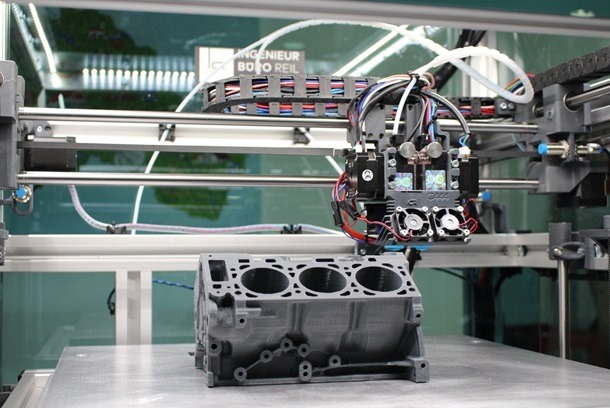In science fiction, machines eventually become an integral component of humankind’s evolution; either we collaborate with robots or survive their onslaught against humanity. However – in reality – robots have transformed our industries and enhanced workplace productivity. In 2017 alone, over 250,000 machines were installed in the United States, as per Robotic Industries Association. These robots take the forms of heavyweight automatons used to weld, paint, or assemble industrial appliances or their component. But these increasingly interactive robots have made it more complicated to ascertain the safety of workers. So, let’s review some hazards associated with industrial robotics and possible ways to deal with them.
Hazards posed by industrial robots
Companies often wonder if implementing automation endangers their employees. Though these robots improve the ergonomic conditions of the workplace, there are also specific threats associated with them. But, as OSHA explains, machine-related accidents don’t occur under normal conditions. Instead, they tend to happen during repair, testing, or maintenance. Thereby, OSHA has identified particular categories of potential hazards associated with industrial robotics, some of which we’d like to discuss here.
Mishaps occur when employees aren’t where they’re supposed to be since machines aren’t smart enough to detect if a person is present nearby. So, in the next section, we’ll discuss methods to prevent injuries caused by robots. Also, we shall review OSHA-recommended robotics safety regulations and the importance of robotics safety training. These safety rules are few, but their proper implementation does ensure mishaps and accidents stay at a minimum. So, here are eight major hazards posed by industrial robotics:
- Human errors:- The first of these hazards involve errors caused by human mistakes. These slips include wrong coding, faulty maintenance, and incorrect activation of the control panel. Some operators endanger themselves when their overfamiliarity with a machine leads to negligence.
- Wear and tear:- Damage to the machinery may lead to injuries to employees. Mechanical failures contribute heavily to robotics hazards in the industry. Sometimes, these faults remain unaddressed for a prolonged time while employees are duped by the machine’s fine exterior.
- Control faults:- Faults in the machine’s control system or software programs may lead to malfunction. These faults cause the machine to behave erratically and enhance its destructive potential. These faults are produced by interference from radiofrequency or electromagnetic phenomena.
- Fake components:- Electronic components can be fabricated by the manufacturer since some of these machines are produced overseas and imported to the USA by unverifiable suppliers. These counterfeit machines are prone to errors and malfunctions that are impossible even to detect.
- Power errors:- Disruptions in power sources also cause robots to malfunction. These disruptions may produce sudden electric surges and lead to electric shocks. These conditions can increase the risk of fires, especially among machines that use flammable hydraulic oil as a power source.
- Unauthorized installation:- Untrained technicians’ failure to maintain the equipment and install the correct software leads to these machines malfunctioning. Even if the technicians are trained, they must follow the required precautions for preventing these accidents from happening again.
- Climate changes:- Lastly, these factors are unpredictable as the environment causes them. These sudden climate changes may cause the machine to malfunction or hinder its performance negatively. So, prepare for power loss/surges when designing/implementing industrial robots.
Ways of dealing with these hazards
In 2017, a 57-year-old Michigan woman was fatally wounded by a robot’s arm that malfunctioned and crushed her head. Are deaths/injuries from industrial robots common? As per OSHA statistics, fatalities caused by these machines remain rare. Robots have caused only 45 deaths and injuries in the workplace, according to OSHA-collected data. These accidents can be eliminated by following standards propagated by OSHA that recommend workers to keep their distance from robots. Companies today, such as Cobotect, have implemented airbags that keep robots’ sharp components from hurting employees. Engineers can also install a sensor to inform a robot when it comes dangerously close to a human being.
OSHA believes that machine-caused accidents can be divided into four broad categories:
- Accidents from mechanical parts
- Accidents from leaking high-pressure components
- Collision accidents in which an unpredicted movement by robots hurts an employee
- Trapping accidents in which workers or their limbs are trapped between two parts of the robot
Robot density also shows how prone human workers are to get hurt by a robot. In China, there are 187 robots for 10,000 employees. Americans have to deal with a higher robot density (228 for 10,000 human workers). So, robotics safety training ensures that employees don’t hurt themselves with their proximity to a robot. Controls may restrict a person’s access to hazardous areas. Pressure-sensing devices can also decrease the probability of exposure to these dangers but don’t reduce the severity of accidents. OSHA – therefore – recommends that workers who operate or work nearby a robot must be fully trained. They must be competent enough to perform their responsibilities safely by wearing the proper gear needed.
Conclusion
Robots are installed to perform work considered harmful and undesirable for human workers. What do we mean by undesirable? These machines take over dull, dirty, and dangerous responsibilities to secure their mortal coworkers. No wonder around 2.7 million industrial robots are operating worldwide today, as per the International Federation of Robotics. But, whereas robots keep workers safe, they also bring specific threats to human safety. In industrial robotics, trapping/collision accidents are common, just like calamities from mechanical parts or leaking high-pressure lines. So, companies using robotic automation must implement safety training programs and follow OSHA rules to ensure a secure office environment.
